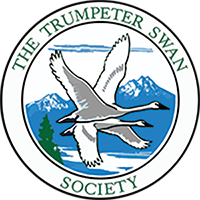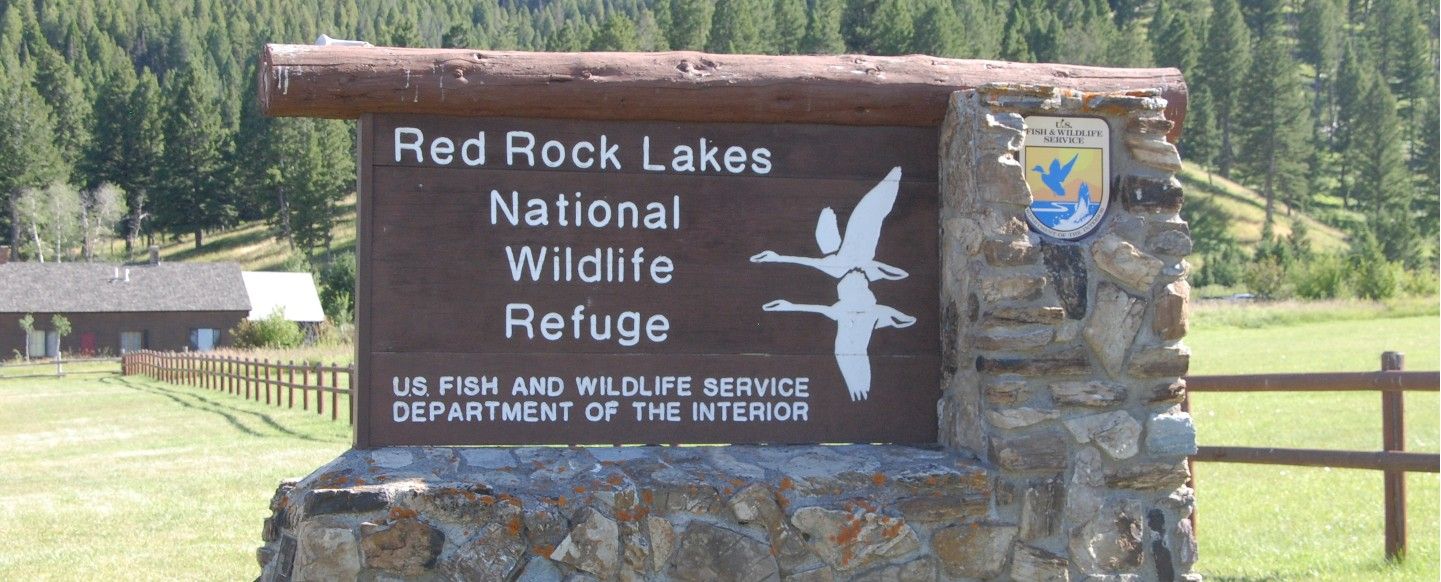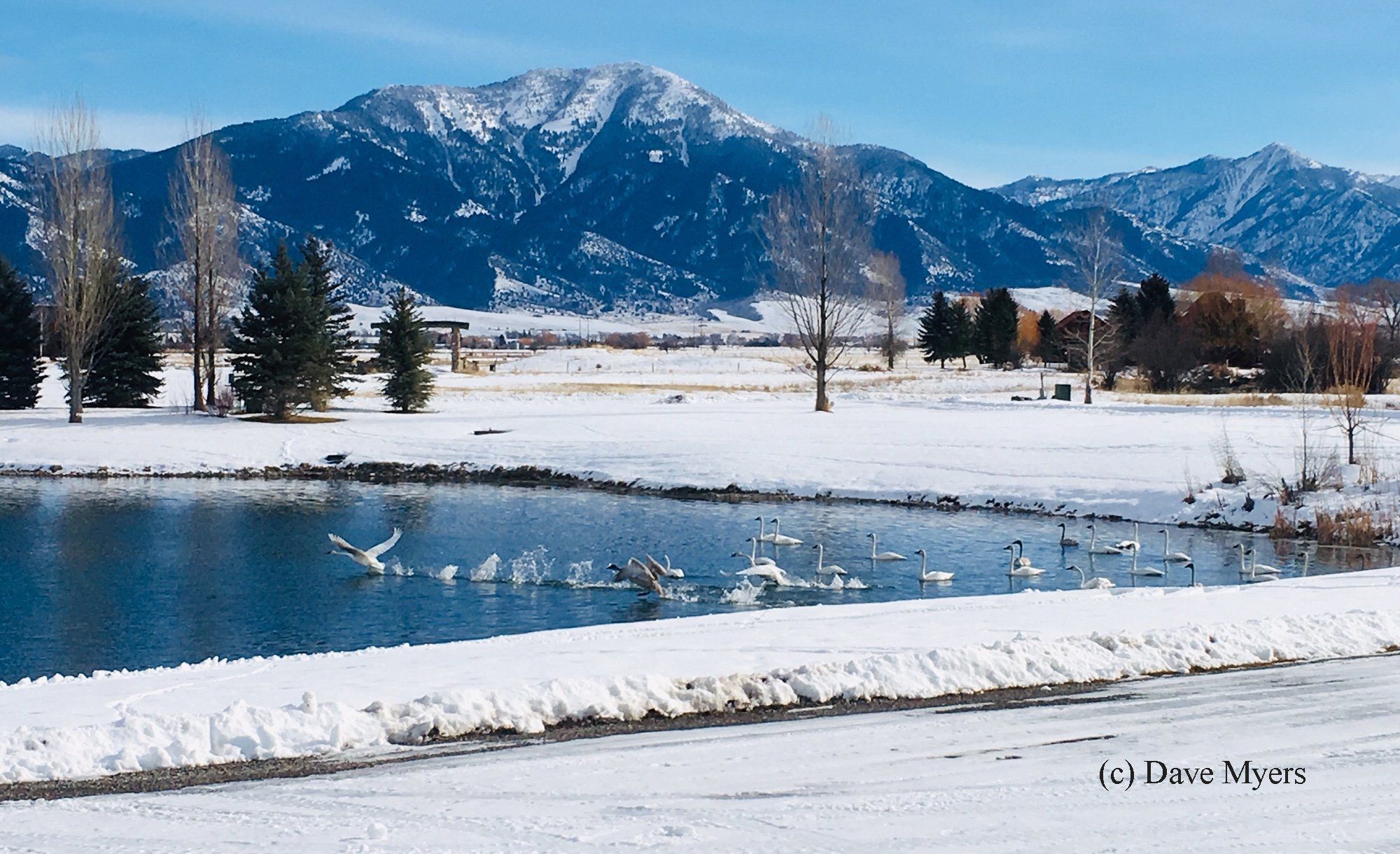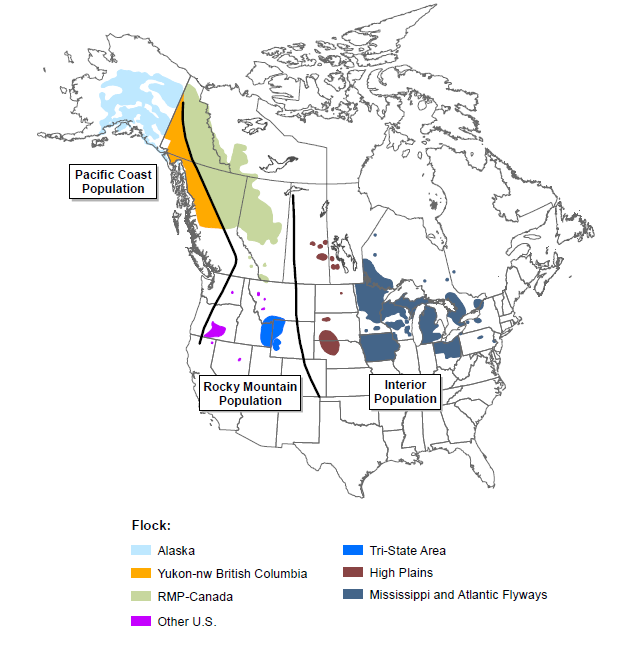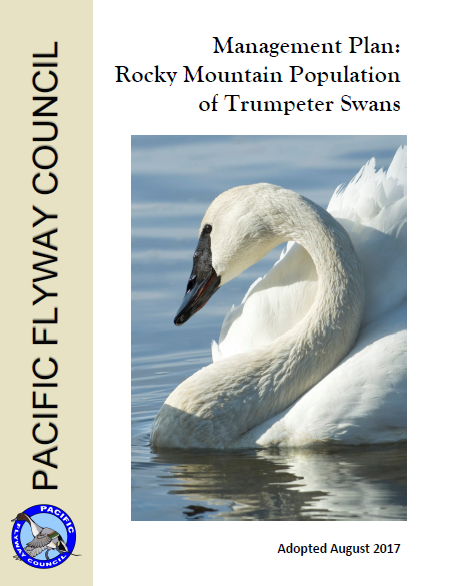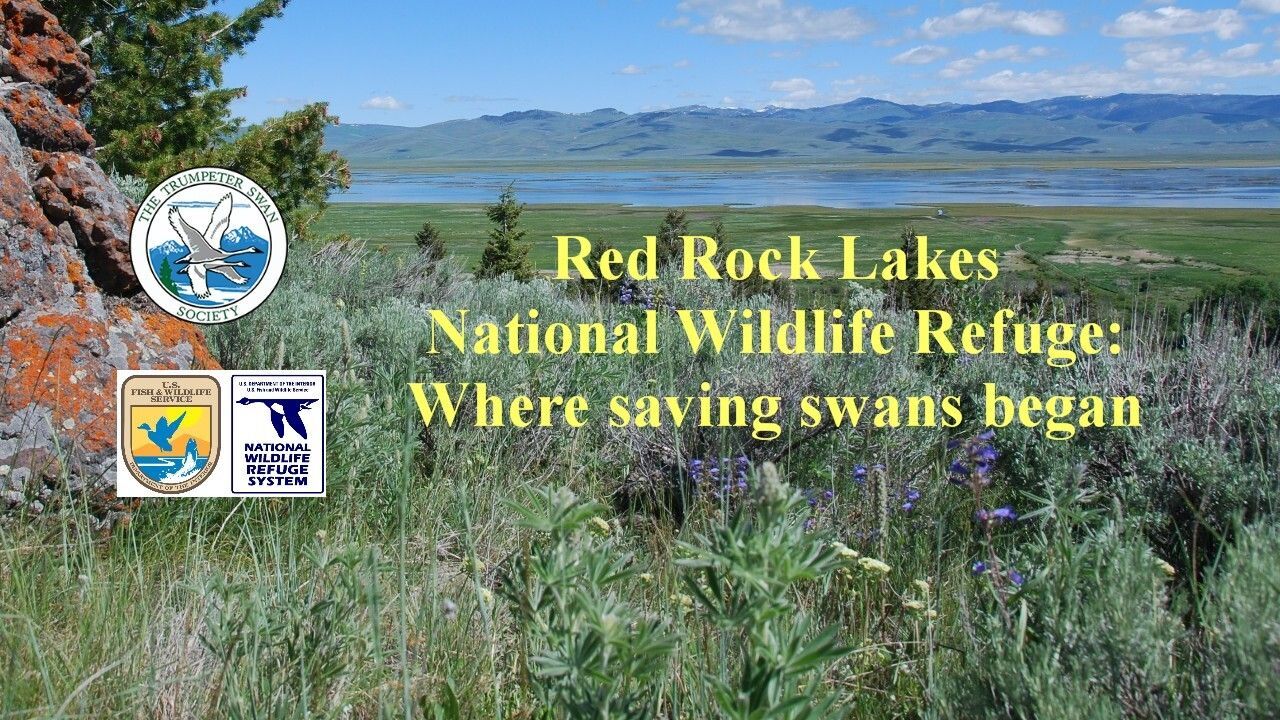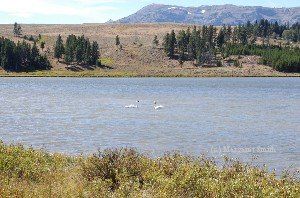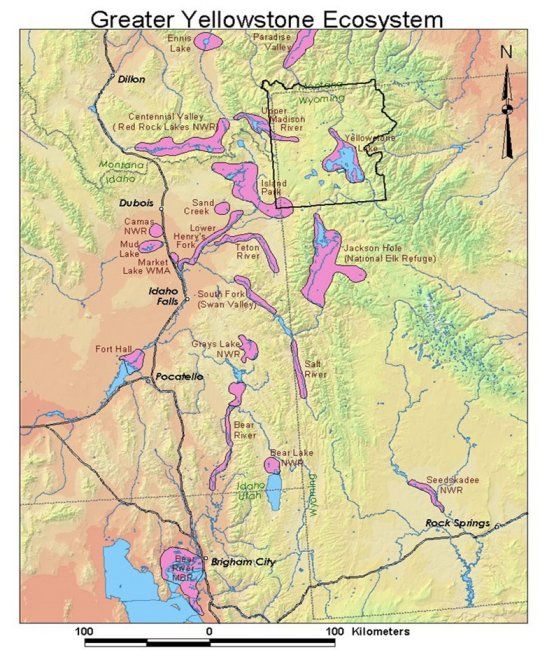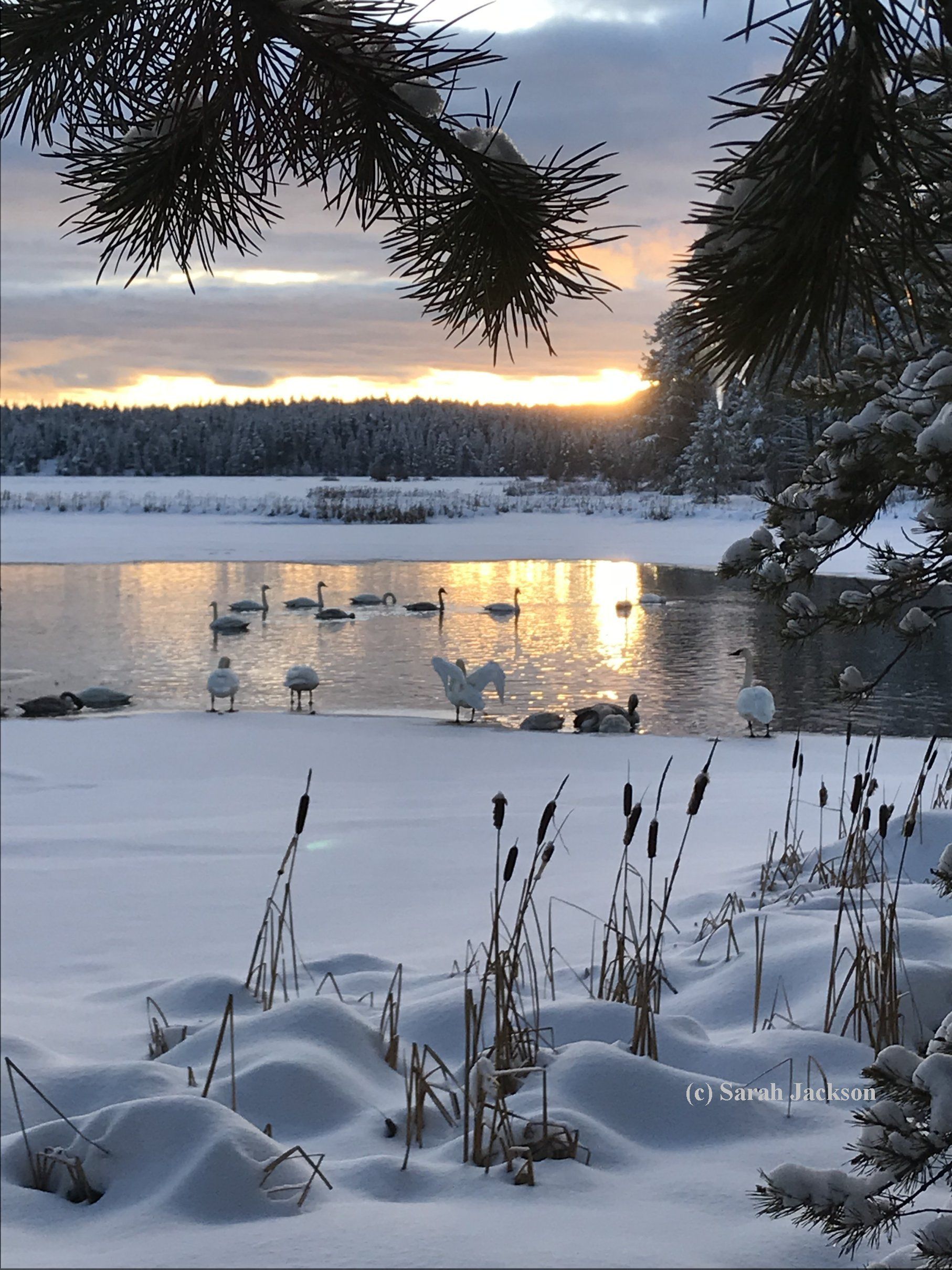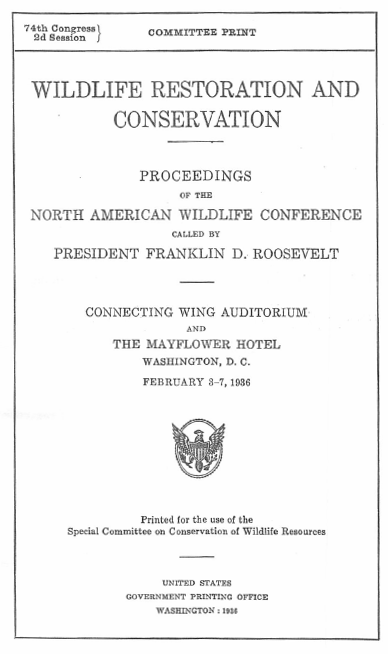Photograph (c) Yellowstone National Park
ROCKY MOUNTAIN POPULATION
Today, less than 20 percent of all continental Trumpeter Swans nest, breed, or winter in the Rocky Mountain Population (RMP). In 2015, there were a reported 11,700 Trumpeter Swans in the RMP.
The majority (95%) of the Rocky Mountain Population nests in Northern Alberta, British Columbia and the Yukon Territory. For the most part this group migrates to the tri-state region of Montana, Idaho and Wyoming for the winter, joining a small population (nearly 550 white birds) of non-migratory Trumpeters that nest in the region. In 2015, there were an additional 216 white swans in the "Other Flocks" of the United States RMP. The RMP is generally divided into three main flocks: Canadian, Tri-State/Greater Yellowstone area, and "Other Flocks."
United States RMP of special concern
The United States's RMP of less than 800 white swans is of particular concern.
United States RMP flocks include swans that nest in the Greater Yellowstone region of Montana, Wyoming, and Idaho. In winter, they are joined by several thousand swans from the Canadian flock, putting pressure on the limited areas with open water and available food.
The "Other Flocks" in the US RMP are restoration flocks in Oregon (Summer Lake Wildlife Area of Oregon and Malheur National Wildlife Refuge), Nevada (Ruby Lakes National Wildlife Refuge), eastern Washington (Turnbull National Wildlife Refuge) and Montana (the Flathead Valley and the Blackfoot Valley).
We are continuing our partnership work to increase the number of Trumpeter Swans in the US RMP through
- our membership on the Swan Technical Committee of the Pacific Flyway where swan management decisions and goals are made
- our partnership in the Oregon Restoration Project
- our participation in the Greater Yellowstone Working Group of the Pacific Flyway
The major threats facing Trumpeter Swans in the RMP are:
- Flock isolation and lack of connectivity between the United States flocks
- Changing hydrology negatively affecting nesting wetlands
- Harsh weather conditions that often include severe winters and cold, wet springs depressing nesting attempts and success
- Limited winter habitat
- Marginal habitat limiting suitable nesting territories
Oregon Restoration Project

Photograph by Martin St. Louis, Oregon Department of Fish and Wildlife
Most of the swans released in the Oregon Restoration Project are cygnets. This is the first successful nesting pair of Trumpeter Swan released as cygnets themselves in Oregon several years before.
We are a partner in the Oregon Restoration Project. We partner with the Oregon Department of Fish and Wildlife and the United States Fish and Wildlife Service to bring Trumpeter Swans back to Oregon where they had been missing for decades.
In 2009, we began releasing Trumpeter Swans at Summer Lake Wildlife Area with a goal of restoring a healthy, viable, and sustainable breeding population of Trumpeter Swans to eastern Oregon.
By December 2018 the Project has released a total of 116 Trumpeters at Summer Lake Wildlife Area. Trumpeter Swans in the project receive green neck collars for tracking.
Your donation to the Oregon Restoration Project helps bring Trumpeter Swans back to Oregon.
GREATER YELLOWSTONE ECOSYSTEM
The Trumpeter Swans that nest in the Greater Yellowstone region of Idaho, Montana, and Wyoming in and surrounding Yellowstone National Park were the only group that survived in the U.S. south of Canada by 1930 as Trumpeters neared extinction. These Greater Yellowstone swans are one of the best-known icons of North American wildlife conservation and treasured by thousands who read E. B. White's "Trumpet of the Swan" in their school days.
During the past few decades their nesting effort and adult numbers have risen very slowly and these swans face significant threats including isolation, winter habitat scarcity, and changing hydrology reducing wetland suitability.
TTSS continues its decades-long work with regional partners to address these serious issues.
